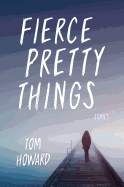
| Publisher: | Indiana University Press | |
| Genre: | Short Stories (single author), Humorous, Family Life, Black Humor, General, Fiction | |
| ISBN: | 9780253041494 | |
| Pub Date: | March 2019 | |
| Price: | $12 |
| Starred | Fiction |
by Tom Howard
In Fierce Pretty Things, Tom Howard presents a collection of short stories that delves into a fascinatingly optimistic world of apocalyptic settings. In "Hildy," a pair of siblings traverse a no-man's land in the wake of a devastating virus. In "Scarecrows," a man is stuck in the wasteland of his own dementia-ridden mind. The characters throughout this collection encapsulate the human endeavor of finding something to hold onto in the face of great tribulation. Some of the tales inhabit a world that straddles the border between reality and mysticism, while others, such as the title story, seek the complex truth of a person's soul even within the mundane surroundings of a schoolyard.
The winner of the Indiana Review's Blue Light Books Prize, this collection is composed of seemingly quiet stories that pack an emotional punch. Howard's prose is tight, finely crafted and yet lyrical in its delivery. With this even-handed, beautiful prose as a guide, Howard never underestimates his readers. Each story begins from an unfamiliar place, whether that's within the mind of a dying man or on a carnival pier in a post-apocalyptic world. Howard's fiction revels in alienating surroundings, slowly making these spaces more and more familiar and poignant. It is this assimilation into the unexpected that gives these stories and their characters their emotional salience and ultimately opens readers to a new understanding of what it means to suffer loss and yet never give up hope. --Alice Martin, freelance writer and editor

| Publisher: | Graywolf Press | |
| Genre: | Literary, Fiction | |
| ISBN: | 9781555978297 | |
| Pub Date: | March 2019 | |
| Price: | $24 |
| Starred | Fiction |
by Kathryn Davis
Once one of the most important trade routes in the world, the Silk Road is now an emblem of how cultures interact and intersect. A locus of peoples, places and things, the routes between Asia and Europe served as a guide between worlds. It's no surprise, then, the concept appears as a central conceit in Kathryn Davis's transcendental novel where history and identity bend and stretch.
Told from the perspective of a group of siblings, The Silk Road follows them through environmental and personal disaster, tracking the collective as it narrates its own conflicts and dissolutions. There isn't much of a plot to the book, more a series of memories, each one related to the whole in ways that always feel slightly obscured. This doesn't stop the story from being compelling, though. The siblings, named only by their profession (one is the Botanist, another the Cook), each have moments to stand out from the whole, where Davis renders them with heartbreaking perfection. While her characters' names and biographies are obscured, she digs into particular moments with such profound specificity that they are brilliantly alive to the reader.
Perhaps intentionally, The Silk Road is reminiscent of another metaphysical narrative about the connection between East and West: Hermann Hesse's Journey to the East. Indeed, lovers of writers like Hesse will instantly fall under Davis's spell, plunging into a world where identity shifts and forms new connections, where archetypes reveal profundities, and mysteries, while never solved, still provide meaning. --Noah Cruickshank, director of communications, Forefront, Chicago, Ill.

| Publisher: | Soft Skull Press | |
| Genre: | Psychological, Humorous, Black Humor, Absurdist, Literary, Thrillers, Fiction | |
| ISBN: | 9781593763091 | |
| Pub Date: | March 2019 | |
| Price: | $15.95 |
| Fiction |
by Richard Chiem
Kittens in vending machines, hippos rising out of dark water, broom handles made of gold: in his first novel, King of Joy, Seattle writer Richard Chiem blends comforting absurdity with the most profound reaches of grief. The result is a strange, unsettling harmony that is typical of his writing.
Drawing from themes also present in his 2012 short story collection, You Private Person, Chiem continues to explore the power of daydreams, drugs and pop music through Corvus, who is utterly adrift after a series of tragic losses. Intending only "to get a little bit more destroyed," Corvus enters into a shady agreement with a volatile porn director named Tim. This work brings her some healing, but when an already precarious situation turns dangerous, she realizes she must leave. À la Thelma and Louise, Corvus takes off with Amber, another actress, and a pit bull called Marco. The novel becomes a different kind of love story, one of deep friendship forged in the strangest of circumstances.
Interweaving flashbacks with present events, Chiem carefully folds illuminating details into his narrative, gradually giving readers a richer and more complex view of his characters. However, the intelligence of the writing really lies in Chiem's use of language: eschewing traditional rules of prose, he crafts a disarming and wholly original vernacular. It creates a cinematic and ultra-evocative story space, one that realizes youth as the alternative universe it can often feel like to those who inhabit it. Although Chiem is undeniably attracted to darker impulses, he doesn't shy away from critiquing the culture that romanticizes trauma. Overall, this is an exceptionally lucid work for Chiem, and it is sure to leave an impression on readers. --Emma Levy, bookseller at Third Place Books Seward Park, Seattle, Wash.

| Publisher: | Viking | |
| Genre: | Family Life, General, Literary, Fiction, Jewish | |
| ISBN: | 9780525522713 | |
| Pub Date: | March 2019 | |
| Price: | $26 |
| Fiction |
by Andrew Ridker
Arthur Alter, a 65-year-old professor of engineering at a St. Louis university, has spent much of his life motivated by self-interest. He moved his family from Boston to take the teaching job, which meant that his wife, Francine, had to restart her career as a couples and family therapist. While she was dying of cancer, Arthur cheated on her with a colleague, the much younger Ulrike, whom he is now trying to dissuade from taking a teaching post out of town. To entice Ulrike to stay, Arthur is offering cohabitation in his suburban home, but he's having a hard time covering the mortgage with the paltry income from his "tenure-allergic professorship." Arthur has a plan: he will get his two adult children, whom he hasn't seen since Francine's funeral nearly two years earlier, to visit him in St. Louis over spring break and convince them to give him some of the cash they inherited from their mom.
Andrew Ridker's ingenious plot sounds ripe for giddy-making farce, and The Altruists is indeed funny as hell (e.g., "Fatherhood was a creepy, ill-fitting look on Arthur, like a cape or a Speedo"). But the book belongs to the tradition of trenchant atomizations of the modern American family--the territory of Jonathan Franzen and Stuart Nadler, and Ridker is just as good. As points of view shift in time among Arthur, Francine and their kids, they take turns circling one another like vultures hungry for, in equal measure, answers and affirmation. --Nell Beram, author and freelance writer
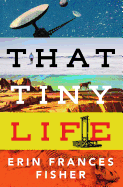
| Publisher: | Astoria/House of Anansi | |
| Genre: | Short Stories (single author), Literary, Fiction | |
| ISBN: | 9781487003661 | |
| Pub Date: | March 2019 | |
| Price: | $16.95 |
| Fiction |
by Erin Frances Fisher
There's nothing tiny about the lives depicted in Canadian author Erin Frances Fisher's extraordinary debut story collection, That Tiny Life. The characters are richly drawn, with thoughts, emotions and beliefs that feel simultaneously recognizable and distinctive. The first half of the book is filled with stories that cover a range of subjects, places and time periods. It opens with a stunner called "Valley Floor." Set in the old American West, a man is forced to make two tough decisions: what to do with his work partner, whose leg infection is probably fatal, and how to care for the dying man's toddler daughter. The story's heartbreaking conclusion sets the tone for the elegiac tales to follow.
The title story is another knock-out, set in the future on a space ship aimed for one of Saturn's moons. Starring two pilots, a man and a woman, the story moves through time between the present and the protagonists' early days on Earth. Their memories of those they left behind drive home the idea that even in the vast reaches of space, every human life matters.
The second half of the book contains a novella entitled "The White." It introduces a young teenage girl who tries to escape her unreliable alcoholic father. Meanwhile, an aging falcon trainer attempts to breed the perfect white bird. Their lives become intertwined in deeply affecting ways. Gorgeous from beginning to end, That Tiny Life highlights the universal human needs for connection, love and forgiveness. --Amy Brady, freelance writer and editor
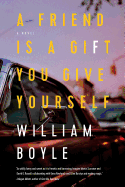
| Publisher: | Pegasus Books | |
| Genre: | Women, Crime, Fiction, Noir | |
| ISBN: | 9781643130583 | |
| Pub Date: | March 2019 | |
| Price: | $25.95 |
| Mystery & Thriller |
by William Boyle
Rena Ruggiero was a good Brooklyn mob wife. A regular churchgoer, she stayed out of Gentle Vic's business and has lived a quiet life since he was gunned down. Then Enzio, with "earlobes that dangle like melted coins," makes a pass at her. After fighting back, she steals his impeccable Impala and flees. Rena runs to the Bronx, to the home of her estranged daughter, Adrienne, and 15-year-old granddaughter, Lucia. Rejected, Rena is invited in by fireball neighbor Lacey Wolfstein, a former x-rated actress who moved in across the street after a stint hustling cash from rich men in Florida.
Things go spectacularly sideways when one of Wolfie's old marks shows up, as does Richie Schiavano, Vic's former right-hand man, who has knocked off a mob sit-down and stolen a briefcase full of cash to fund a future with Adrienne and Lucia. The confrontation at Wolfie's gets deadly when a sledgehammer-wielding gangster comes after Richie. Believing in the titular Robert Louis Stevenson quote, "A friend is a gift you give yourself," Wolfie takes Rena and Lucia under her street-smart wing and on the run.
William Boyle's work (Gravesend, The Lonely Witness) is some of the finest in crime fiction and while he ticks every box each time out, the emphasis changes. Character and nonstop action are gloriously on the rampage here, as three very different women join forces to survive high-speed car chases, crashes, shootings, violent men and general bedlam. Boyle's dialogue snaps and his sense of place is top-notch. This roller-coaster madcap tragicomedy is a great gift to give yourself. --Lauren O'Brien of Malcolm Avenue Review

| Publisher: | Park Row | |
| Genre: | Psychological, Crime, Suspense, Thrillers, Fiction | |
| ISBN: | 9780778369103 | |
| Pub Date: | March 2019 | |
| Price: | $26.99 |
| Mystery & Thriller |
by Annie Ward
Readers who like unreliable narrators are in luck with Annie Ward's deliciously unsettling Beautiful Bad, which contains not one, but two unreliable narrators to keep everyone on edge until the very last page. And the third lead character can't be trusted, either.
The psychological thriller opens 12 weeks before the main event, with wife and mother Maddie, her face badly damaged from a recent incident, planning to see a therapist without her husband's knowledge.
Cut to the next chapter, titled "Day of the Killing," which unfolds like a scene in a spine-tingling suspense movie--character tiptoeing down the stairs into a dark basement; something horrifying is ahead but you can't look away. The chapter starts with a call to 911. When the dispatcher answers, a child is shrieking while a woman whispers for him to go upstairs. And then the woman screams for help and the line goes dead.
An officer races to the address where the call originated, hears yapping dogs in the backyard, peeks through the front door--and sees "a red mess in the middle of the room." The officer knows she's supposed to wait for backup before entering, but her priority is the child inside who's possibly in danger. She enters the house alone, "to see what unspeakable thing has happened here."
Back to Maddie, now 10 weeks earlier, giving her therapist a long list of her fears: whenever her young son, Charlie, cries; when her husband, Ian, drinks or doesn't wake up; ISIS; drowning; "the darkness in some people"; and finally "[t]hat something is wrong with me."
Maddie is currently residing in Kansas with her family. But back in 2001, she lived in Sofia, Bulgaria, teaching English to students and writing travel books. Maddie often visited her best friend Jo, who worked with refugees in nearby Macedonia. That's where Maddie and Jo met Ian, a bodyguard for the British ambassador. Ian was always texting his girlfriend back home, but from the start, chemistry sizzled between him and Maddie. Maybe with Jo, too?
Throughout the years, as the conflict in the Balkans intensifies, Maddie, Jo and Ian navigate the ups and downs of their relationships, the pressure of their jobs and devastating personal losses, trying to hang on to their sanity and humanity amid horror. All three eventually leave Eastern Europe, bringing home ghosts that won't stop haunting them.
After the early chapter with the officer at the house that portends nothing but dread, Ward takes her time unfolding the histories of her three lead characters, starting at the beginning of their friendships and bringing them up to the day of the killing. Against the vivid backdrop of the Balkans--readers can almost feel the heat and taste the dust--Maddie and Jo get high on danger. The more the Macedonian border guards warn Maddie to stay away, the more she keeps coming back. But she wasn't born intrepid. Ward reveals a harrowing incident in Maddie's childhood that made her defiant toward death, though perhaps the experience damaged Maddie more than she realizes.
Her friendship with Jo becomes strained at one point, each woman feeling betrayed. The reason for Jo's behavior is eventually explained--and it's a shattering one. Jo and Maddie are prickly and mercurial and sometimes make questionable choices, but they're always believable as they deal with the obstacles in their lives.
Ian's behavior after being in war zones is no joyride, either. He's desperate to move on, to build a picture-perfect domestic life with Maddie in her Kansas hometown. He buys them a house and takes up painting miniature models. But Maddie knows there's a darkness and unspeakable depth to his pain: "With trembling hands and squinting eyes, he gathered up the tiny parts of those dismembered soldiers and carefully glued them together... and painted them with bright colors to bring them to life. And then splattered them with blood."
This scene unnervingly captures the complicated nature of post-traumatic stress disorder. Ian is big and unpredictable; when triggered, he can transform from loving to menacing on a dime. Ward is careful, and skillfully so, to portray him as someone in need of sympathy and care. Maddie's heart breaks for him, but at the same time she's scared of her own husband. Her feelings expertly illustrate the beautiful and the bad in their relationship.
It's this combination of crime and psychological study that makes Beautiful Bad so memorable. It asks questions there are no easy answers for, and depicts a chilling scenario for when trauma goes untreated. Sometimes love isn't enough, and sometimes too much of it can lead to tragedy. --Elyse Dinh-McCrillis
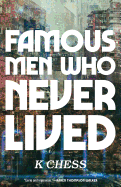
| Publisher: | Tin House Books | |
| Genre: | Dystopian, Literary, Hard Science Fiction, Apocalyptic & Post-Apocalyptic, Fiction, Alternative History, Science Fiction | |
| ISBN: | 9781947793248 | |
| Pub Date: | March 2019 | |
| Price: | $24.95 |
| Science Fiction & Fantasy |
by K Chess
In this accomplished first novel, K Chess imagines an unusual and disquieting refugee experience with a sci-fi twist.
When the Hundred Fifty-Six Thousand crossed through the Gate between timelines, they escaped nuclear war but lost an entire world. Now living in New York City in our timeline, Universally Displaced Persons (UDPs) like Hel and her lover Vikram find themselves "shipwrecked in a world populated by seven billion strangers," where they face suspicion and discrimination. While former professor Vikram tries to move forward, attending government-mandated indoctrination meetings and working as a night watchman, former doctor Hel becomes obsessed with The Pyronauts, a famous science fiction novel from their world. Convinced the early death of its author in the new timeline marks its first point of divergence from hers, Hel campaigns for the founding of a museum to preserve the book and UDP culture. When the only existing copy of The Pyronauts goes missing, her quest to find it dovetails with her struggle to shake the past loose even as Vikram begins to reach for it again.
Though Chess primarily tells the present-day story from Hel and Vikram's alternating points of view, her multiverse gains further depth from transcripts of interviews with UDPs about events around the migration and life in the new New York City. Light, accessible science fiction elements enable the plot rather than take center stage. An allegory for refugeeism, othering and coping with staggering loss, Famous Men Who Never Lived will leave readers haunted by the UDPs' broken past but hopeful for their future. --Jaclyn Fulwood, blogger at Infinite Reads

| Publisher: | Knopf | |
| Genre: | Biography & Autobiography, Art, Modern (Late 19th Century to 1945), American, General, Artists, Architects, Photographers, History | |
| ISBN: | 9780307957290 | |
| Pub Date: | March 2019 | |
| Price: | $30 |
| Biography & Memoir |
by Carolyn Burke
The love affair between the photographer-impresario Alfred Stieglitz and the painter Georgia O'Keeffe has already been well documented. But by introducing two other artistic personalities--their friends Paul Strand and Rebecca Salsbury--to the pair's narrative, Carolyn Burke (No Regrets: The Life of Edith Piaf) assembles a group biography that tells an exponentially more interesting story about the trade-offs of living the creative life.
In Foursome: Alfred Stieglitz, Georgia O'Keeffe, Paul Strand, Rebecca Salsbury, Manhattan and the Stieglitz family home at Lake George, N.Y., are the primary early-20th-century backdrops. In these settings Burke plays out the quartet's cross-couple flirtations, rivalries and philosophical disagreements (Stieglitz wanted to keep art separate from politics; fellow photographer Strand didn't). The author of several esteemed biographies of artists, Burke does a bang-up job laying out her subjects' interpersonal dynamics, notably Strand and Salsbury's thrall to the other couple, and interpreting her subjects' work (Foursome includes several dozen black-and-white photos and reproductions). Burke leans heavily but rewardingly on correspondence written by her subjects, some of it newly available, some of it amusingly risqué. Where a source is lacking, Burke weaves conjecture into her narrative, all of it reasonable--e.g., "One can imagine [Rebecca] skimming the reviews for mentions of Paul."
Salsbury, a painter who didn't reach her artistic potential until the friends were geographically scattered, is Foursome's most disarming voice. She might have been speaking for all four artists when she told some friends about her time in New York, "Painful as much of it was, I am glad it all existed." --Nell Beram, author and freelance writer
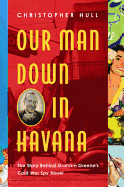
| Publisher: | Pegasus Books | |
| Genre: | Biography & Autobiography, Cuba, Caribbean & West Indies, Literary Figures, History, Historical | |
| ISBN: | 9781643130187 | |
| Pub Date: | March 2019 | |
| Price: | $27.95 |
| Biography & Memoir |
by Christopher Hull
A successful literary biography compels the reader to revisit the subject's work. Christopher Hull's Our Man Down in Havana ably succeeds in sparking this compulsion. But his book is more than a biography that emphasizes the English author Graham Greene's satire of British spying in the Caribbean. It also explores the political and cultural developments in Cuba during the 1950s and '60s and analyzes the often pathetic and unintentionally hilarious intelligence work of Great Britain in the same period.
It is not news that Greene worked as a spy for the British government while maintaining cover as an author. What may be news is how politically astute and prescient he was. Greene published Our Man in Havana in 1958, at the same time Castro was ousting Fulgencio Batista in Cuba and setting up a Communist government.
A researcher focused on British interactions with Latin America, Hull presents evidence for multiple trips by Greene to the region, including a few Greene avoided mentioning in his memoirs. He uncovers rivalries with other intelligence operatives in the region: "maybe it was a case of two part-time spooks, suspicious of each other's activities in Cuba and wary of having their cover blown." He also details how the author forecasted many events in his novel, such as the unmasking of the British double-agent-cum-defector Kim Philby (a friend of Greene) and the Cuban Missile Crisis.
One moment might give readers pause: Hull uncritically cites Michael Sheldon's highly contested biography Graham Greene: The Man Within. However, this does not ultimately detract, and Our Man Down in Havana intrigues and satisfies in every other way imaginable. --Evan M. Anderson, collection development librarian, Kirkendall Public Library, Ankeny, Iowa

| Publisher: | Crown Archetype | |
| Genre: | Biography & Autobiography, Feminism & Feminist Theory, Entertainment & Performing Arts, Commentary & Opinion, Social Science, Political Science | |
| ISBN: | 9781984822987 | |
| Pub Date: | March 2019 | |
| Price: | $25 |
| Biography & Memoir |
by Amber Tamblyn
Actor, director and poet Amber Tamblyn's (Any Man, Dark Sparkler) first nonfiction book is part memoir, part feminist credo.
Around her 30th birthday, Tamblyn found herself in a crisis of identity, followed by a personal and professional rebirth. Pointing out that the U.S., too, has been going through a time of upheaval as it confronts a history of inequality and questions about its future, Tamblyn dubs these concurrent changes an Era of Ignition. Her book seamlessly moves between scenes from her own life to cultural criticism, and she brings a personal narrative to national issues like the #MeToo movement, Time's Up (of which she is a founding member), the 2016 election, women's healthcare, workplace discrimination and the daily injustices of the female experience. "We are made to see ourselves and our lived experiences as almost cartoonish stereotypes of our truths, which is a way of othering us from our own existence," she writes.
Era of Ignition is gripping, astute and even funny; it's hard to put down but deserves a slow and thoughtful reading. Tamblyn is self-aware, particularly when it comes to her own advantages--as a white woman and as a public figure. She recognizes those, especially black and brown women, who don't have the same opportunities she does, and at times brings their voices to the fore: one chapter includes an essay by poet Airea D. Matthews about black feminism and solidarity, another section includes an interview with Filipino American trans writer Meredith Talusan. Here's hoping Tamblyn's name and access get these messages into the hands of more readers. --Katy Hershberger, freelance writer and bookseller
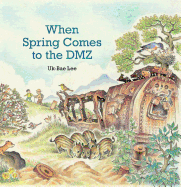
| Publisher: | Plough Publishing | |
| Genre: | People & Places, Asia, Social Themes, General (see also headings under Family), Juvenile Fiction, Historical | |
| ISBN: | 9780874869729 | |
| Pub Date: | March 2019 | |
| Price: | $17.95 |
| Starred | Children's & Young Adult |
by Uk-Bae Lee, trans. by Chungyon Won , Aileen Won
When the Korean peninsula was divided into North and South in 1953, the consequences were especially tragic for separated families. In the six-plus decades since the ceasefire, reunion--politically and personally--has proven virtually impossible. On either side of the Military Demarcation Line, both North and South Korea built fences approximately 1.25 miles from the actual line, stretching 154 miles across the peninsula. Ironically, this Demilitarized Zone (DMZ) has flourished as an untouched haven for flora and fauna.
People, too, arrive at the DMZ, albeit under highly different circumstances. "When spring comes to the DMZ," while nature rejuvenates, "soldiers check the fence/ and fix the broken places." With the milder weather, "Grandfather climbs up/ to the DMZ observatory/ and looks at the northern sky." As seasons change, soldiers "undergo exhausting training" in summer, practice tank and plane maneuvers in autumn and "think of their homes" in winter. Without fail, "Grandfather climbs up to the DMZ lookout again," to gaze longingly at the "northern land." As another year passes and spring returns, Grandfather's only wish is to bypass the lookout, "fling the tightly locked gates wide open"... and share the same freedom as the nearby animals.
Award-winning author/artist Uk-Bae Lee has never known a united country. He channels a hope for reunion into When Spring Comes to the DMZ, originally published in his native South Korea in 2010 as part of the Peace Picture Book Project. His text, smoothly translated by Chungyon Won and Aileen Won, is understated and simple, with further resonance presented through his multi-layered illustrations. With gentle words and glorious art, Lee inspires the newest generation of readers to lead the way... and make miracles happen. --Terry Hong, Smithsonian BookDragon
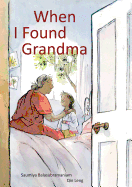
| Publisher: | Groundwood Books | |
| Genre: | Emotions & Feelings, Family, Social Themes, Juvenile Fiction, Multigenerational | |
| ISBN: | 9781773060187 | |
| Pub Date: | March 2019 | |
| Price: | $17.95 |
| Children's & Young Adult |
by Saumiya Balasubramaniam, illust. by Qin Leng
When Maya says that she wants to see her grandma, Mother explains "Grandma lives many thousands of miles away." But, a few weeks later, while walking home from school, Mother says she has a surprise for Maya, and it's even "more special" than cupcakes. Inside, Maya finds her "special surprise": Grandma!
Maya learns right away that Grandma does things differently. She wears a "crimson sari" and offers "homemade sweets"--which Maya quickly decides she doesn't like as much as cupcakes. The next day at dismissal time, instead of waiting outside Maya's classroom with the rest of the parents and grandparents, Maya's grandma strides right in, wearing her "fancy clothes" and jingling her bangles. The next morning, instead of taking the exciting trip Father had promised to an island with a carousel, Mother says the family will pray at a temple for Holi. Maya "wish[es] Grandma had never come."
Saumiya Balasubramaniam takes a tender yet piercing look at the complexity of family bonds, especially when they span oceans and generations. Maya's initial unhappiness gives way to acceptance and love in a way young readers are sure to understand. Her struggles with cultural differences are convincingly stated, and reinforced perfectly by Leng's lively ink-and-watercolor illustrations: on page after page, Maya's body language makes her thoughts crystal clear. Leng's broken lines and dynamic use of color and texture help promote the feeling of a strong little girl in motion. Maya's and Grandma's compromises are satisfying and, by the end, as Father points out, Maya didn't just find Grandma, they "found each other." --Lynn Becker, blogger and host of Book Talk, a monthly online discussion of children's books for SCBWI
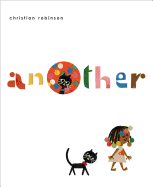
| Publisher: | Atheneum | |
| Genre: | Imagination & Play, Juvenile Fiction, Diversity & Multicultural | |
| ISBN: | 9781534421677 | |
| Pub Date: | March 2019 | |
| Price: | $17.99 |
| Children's & Young Adult |
by Christian Robinson
One night, as a girl sleeps in her bed, the red-collared cat on her blanket spies a toy mouse on the floor. Through a portal in the wall arrives a blue-collared cat, which makes off with the mouse back through the hatch. The red-collared cat follows the other cat through the portal. The girl, who has awoken and taken all this in, can't be expected to stay put, can she?
That's when things get weird--for the reader. (The girl and cat remain unruffled throughout their adventure.) After the girl follows her cat through the portal, she appears with her head sticking out of a hole in what looks like the floor, yet her braids point skyward. Turning the page and rotating the book 180 degrees solves the gravity-defying hair problem: now her head is poking out from a hole in the ceiling. From this vantage point, she observes her cat entering a portal in the wall. After she shinnies down some red fabric (it looks an awful lot like the blanket on her bed), she trails her cat through the portal. Girl and cat then proceed through a surreal obstacle course, which includes a ball pit slide, a rainbow-colored conveyor belt and a free-floating play space.
With its loop-the-loop perspective and call for interactivity, Another will remind readers of Press Here, and the girl's unblinking entrée into another dimension calls to mind Harold and the Purple Crayon. But this isn't to attribute anything other than full creative authorship to Christian Robinson (Last Stop on Market Street). Robinson makes this wholly original wordless fantasy utterly coherent thanks to clutter-free, digitally tweaked paint-and-collage art that pointedly doesn't hide its real-world seams (brushstrokes, crumpled paper). Most readers will gladly surrender to this mind-bending romp. --Nell Beram, freelance writer and YA author